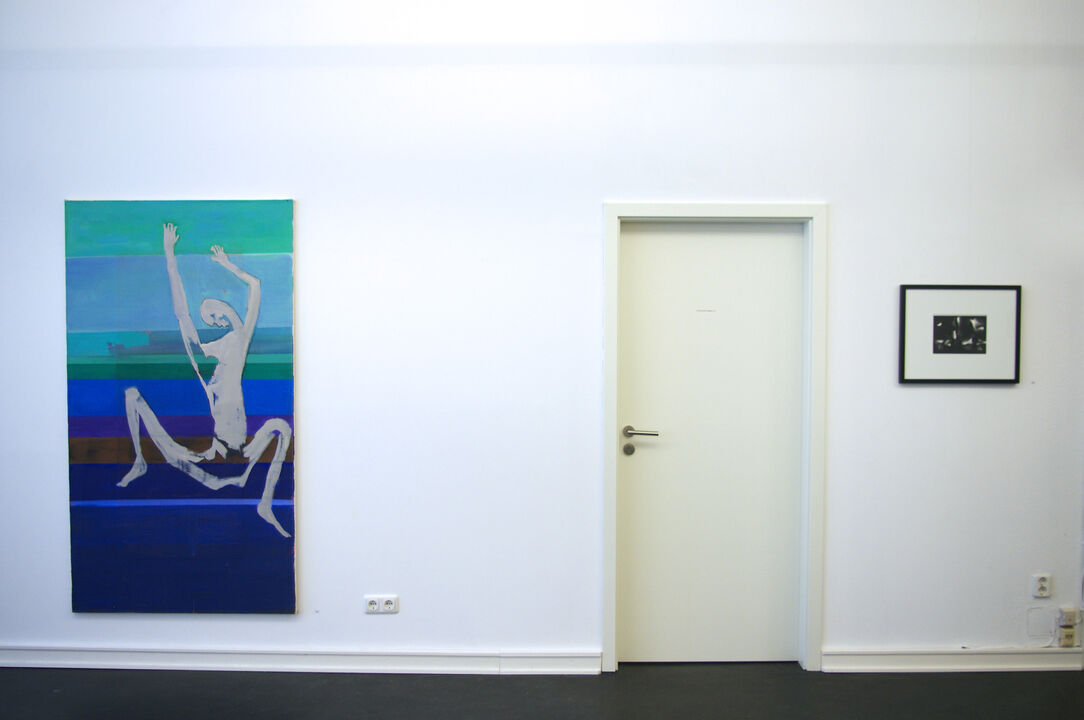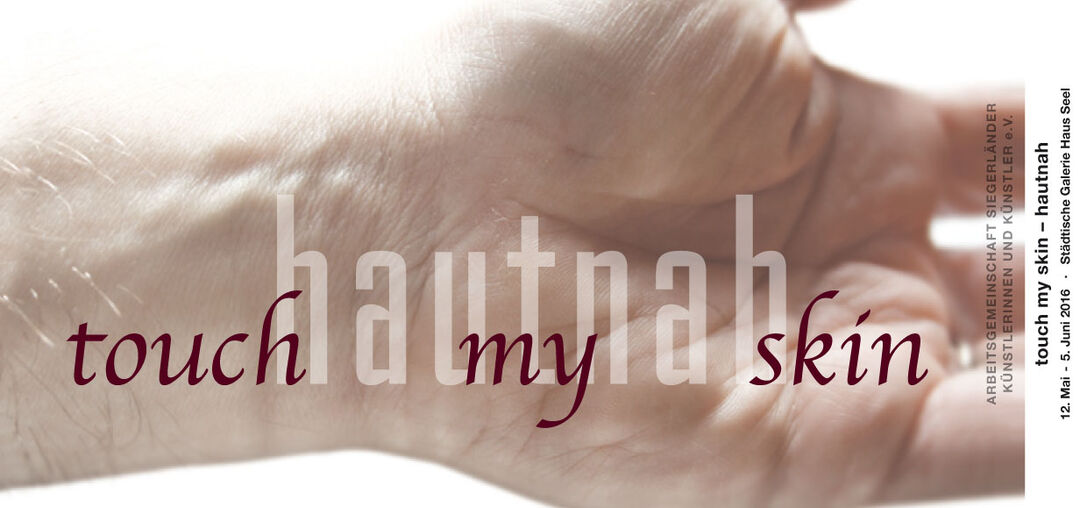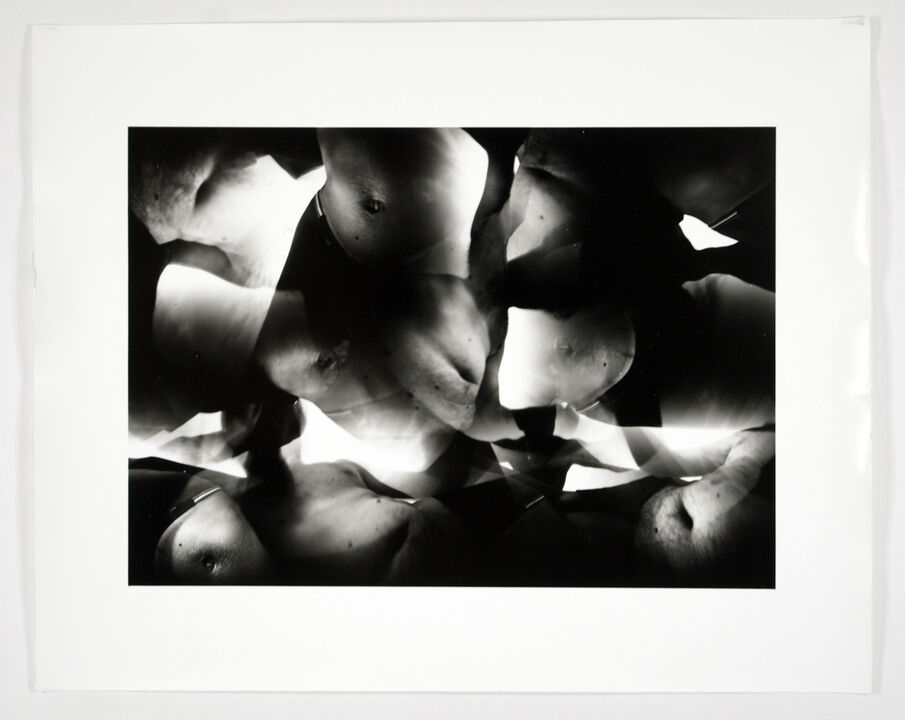Touch my skin - Close Up

Touch my skin - Close Up

touch my skin – hautnah
May 12 – June 05.2016
Städtische Galerie Haus Seel, Siegen, Germany
Participating artists: Helmut Geis, Renate Hahn, Thomas Kellner, Kai Uwe Körner, Dago Koblenzer, Kristian Kosch, Michael G. Müller, Petra Oberhäuser, Helmut Riekel, Michael Schumann, Helga Seekamp, Kurt Wiesner

"Construction and deconstruction, composition and fragmentation.” Zehnder, Professor Frank Günter, PhD, Farbwelt 135-36, Kreis Düren, 2010, Düren, page 46
Touch my skin - Close Up Hautnah
ASK exhibition at Haus Seel
Spring 2016
If you look up "touch my skin" on Google, a Würzburg address for hair removal comes up, while another reference is to a song of the same name by the group "Infinite Dreams". Even if - as far as the latter is concerned - the romantic interpretation is not far-fetched, we are pursuing a more far-reaching artistic perspective with the exhibition project.
But before that, we would like to make a few more fundamental comments in the necessary brevity for a better understanding: the theme of "Touch my skin" is about our sensory perception, or more precisely our sensory apparatus of tactile perception. From the very first day of life, touching our skin and our sense of touch open up the possibility of social existence and ensure our survival. Through tactile stimuli, we experience our existence as being secure in others and, as we grow older, we come to understand ourselves as a counterpart. Throughout the entire lifespan, it is also about a sensual reassurance of our own existence in the other person, be it in the early years of life through tactile stimuli, be it in later life through everyday communication (e.g. through greeting rituals) through to forms of eroticism or sexual contact. It is therefore a highly existential perspective when we make tactile perception the subject of art and the theme of our exhibition.
The focus of our artistic considerations on the topic of "Touch my skin" is therefore on what touches us or what we can touch in the sense of "close-to-the-skin" sensory perception through tactile stimuli and sensations. This is easy to imagine with objects, sculptures and installations that can be touched directly with the hand, especially as the stimulus of touching works of art has always been an issue (especially for the supervisors). Pictorial media such as painting and photography are more difficult, even if experience shows that the impulse to touch pictures in exhibitions is very strong, sometimes irresistible.
If you look for examples in painting where it has been possible to open up such a sensual dimension of perception with painterly means, you come across Lucian Freud (or the group of British realists after the Second World War, Bacon, Freud, Auerbach). Freud in particular shows an increased interest in corporeality and the phenomenon of skin.
Lucian Freud's works are characterized by a hitherto almost unknown depth of colour, closeness and immediacy. Freud's analytical gaze goes straight to the skin, indeed in some pictures it seems to penetrate the skin, to go under the skin to reveal the underlying tissue structure. The skin becomes the key to the artistic approach to the object or person and its secret. It is - as Invar Tolle Hollaus has described it - a kind of permeable membrane that removes the separation between the figure and its surroundings, making it appear all the more fragile and in need of protection. (Cf. LWL Museum Münster, exhibition "Das nackte Leben"). The figures are at the mercy of the artist's sharp, penetrating gaze and reveal - often to the point of pain - a close proximity to the person.
Freud's works clearly show that painting can also create a form of immediacy and closeness, which is the intention of our exhibition theme. Of course, it is not about copying Freud, but about the aspect of a way of working that we would call analytical, getting to the bottom of things, in other words "up close and personal", which incidentally is not tied to a specific subject (nude painting, portrait). Working "up close" means bringing things into a tangible proximity.
Incidentally, this also reflects the perspective of the recipient. From his point of view, the title of the exhibition "Touch my skin" could be about the desire for closeness and immediacy in the sense of "show me something that touches me, that grabs me" (which is not synonymous with emotionalization) and that perhaps also "gets under my skin", even if there is a risk of it hurting.
City of Siegen
Department of CultureSiegen
House Seel
Kornmarkt 20
57072 Siegen
Telephone: (0271) 404-3057
Fax: (0271) 404-363057
E-mail: h.dellori@siegen.de
Opening hours of the Städtische Galerie Haus Seel
For the duration of the exhibitions:
Tuesday to Saturday: 2 p.m. to 6 p.m.
Sunday and public holidays: 11.00 to 13.00 and
14.00 to 18.00
Contact during opening hours
Telephone: (0271) 404-1447
Ausstellung der ASK im Haus Seel
Frühjahr 2016
Schaut man bei Google nach unter „touch my skin“, dann meldet sich eine Würzburger Adresse für Haarentfernung, ein anderer Hinweis geht auf einen gleichnamigen Song der Gruppe „Infinite Dreams“. Auch wenn – was letzteres anlangt - die romantische Lesart nicht abwegig ist, verfolgen wir mit dem Ausstellungsprojekt eine weiter gehende künstlerische Perspektive.
Doch zuvor möchten wir zum besseren Verständnis in der gebotenen Kürze einige wenige grundsätzlichere Anmerkungen machen: beim Thema „Touch my skin“ geht es um unsere sinnliche Wahrnehmung, präziser unseren Sinnesapparat taktiler Wahrnehmung. Hautberührung und Tastsinn eröffnen uns vom ersten Lebenstag an die Möglichkeit sozialer Existenz, sichern unser Überleben. Durch taktile Reize erleben wir unsere Existenz als im Anderen geborgen und mit zunehmendem Lebensalter als Gegenüber zu begreifen. Über die ganze Lebensspanne hinweg geht es auch um eine sinnliche Vergewisserung der eigenen Existenz im Gegenüber, sei es in den frühen Lebensjahren durch taktile Reize, sei es im späteren Leben durch alltägliche Kommunikation (z.B. durch Begrüssungsrituale) bis hin zu Formen der Erotik bzw. des sexuellen Kontaktes. Es geht also um eine höchst existentielle Perspektive, wenn wir taktile Wahrnehmung zum Gegenstand von Kunst und zum Thema unserer Ausstellung machen.
Der Fokus unserer künstlerischen Überlegungen zum Thema „Touch my skin“ liegt also auf dem was uns berührt oder was wir berühren können im Sinne „hautnaher“ sinnlicher Wahrnehmung durch taktile Reize und Empfindungen. Dies ist gut vorstellbar bei Objekten, Plastiken, Installationen, die mit der Hand unmittelbar berührt werden können, zumal der Reiz Kunstwerke anzufassen, schon immer ein Thema (vor allem für die Aufsichtskräfte) ist. Schwieriger sind da schon bildliche Medien wie Malerei und Fotografie, auch wenn die Erfahrung zeigt, dass der Impuls in Ausstellungen auch Bilder anzufassen sehr groß, manchmal unwiderstehlich ist.
Sucht man in der Malerei nach Beispielen wo es gelungen ist mit malerischen Mitteln eine solche sinnliche Warnehmungsdimension zu erschließen, so stößt man auf Lucian Freud (resp. die Gruppe des britischen Realismus nach dem Zweiten Weltkrieg Bacon, Freud, Auerbach). Vor allem bei Freud ist ein gesteigertes Interesse an Körperlichkeit und am Phänomen Haut erkennbar.
Die Arbeiten von Lucian Freud sind gekennzeichnet durch eine bis dato kaum gekannte tiefgründige Farbigkeit wie Nähe und Unmittelbarkeit. Der analytische Blick Freuds geht unmittelbar auf die Haut, ja er scheint in manchen Bildern in die Haut einzudringen, unter die Haut zu gehen um die darunter liegende Gewebestruktur offenzulegen. Die Haut wird zum Schlüssel für die künstlerische Annäherung an das Objekt bzw. die Person und ihr Geheimnis. Sie ist – wie Invar Tolle Hollaus das bezeichnet hat - eine Art durchlässiges Membran, welches die Trennung der Figur von ihrem Umraum aufhebt und sie dadurch umso fragiler und schutzdedürftiger erscheinen läßt. (Vgl. LWL Museum Münster. Ausstellung „Das nackte Leben“). Die Figuren sind dem scharfen durchdringenden Blick des Künstlers ausgeliefert und lassen - oftmals bis zur Schmerzgrenze - eine enge Nähe zur Person erkennen.
Deutlich wird an den Arbeiten von Freud, dass auch die Malerei eine Form der Unmittelbarkeit und Nähe herstellen kann, die mit unserem Ausstellungsthema intendiert ist. Freilich geht es nicht darum Freud zu kopieren, sondern um den Aspekt einer Arbeitsweise, ,die wir analytisch nennen würden, den Dingen auf den Grund gehend, eben „hautnah“,was im Übrigen nicht an ein bestimmtes Sujet (Aktmalerei, Portrait) gebunden ist. „Hautnah“ zu arbeiten bedeutet die Dinge in eine spürbare Nähe zu rücken.
Dies trifft im Übrigen auch die Perspektive des Rezipienten. Aus seiner Sicht könnte es beim Titel der Ausstellung „Touch my skin“ um den Wunsch nach Nähe und Unmittelbarkeit gehen im Sinne von 'zeig mir etwas, was mich berührt, was mich ergreift' (was nicht gleichbedeutend ist mit einer Emotionalisierung) und was mir vielleicht auch „unter die Haut geht“ auch wenn damit die Gefahr verbunden ist, dass es schmerzt.
Stadt Siegen
Abteilung KulturSiegen
Haus Seel
Kornmarkt 20
57072 Siegen
Telefon: (0271) 404-3057
Telefax: (0271) 404-363057
E-Mail: h.dellori@siegen.de
Öffnungszeiten der Städtischen Galerie Haus Seel
Für die Dauer der Ausstellungen jeweils:
Dienstag bis Samstag:14.00 bis 18.00 Uhr
Sonntag und an Feiertagen: 11.00 bis 13.00 Uhr und
14.00 bis 18.00 Uhr
Kontakt während der Öffnungszeiten
Telefon: (0271) 404-1447
Thank you
Thank you to Arbeitsgemeinschaft Siegerländer Künstler and Kultur Siegen for organising this groupshow in our City Arts Gallery in Siegen
Gerhard Glüher: Camera obscura - old technology, new impulses

From 1993 to 1998, after initial experiments with various pinhole cameras, Thomas Kellner built two cameras that were decisive for his career. A panorama camera for the entire length of a 35mm film and a Planfil camera with 11 pinhole apertures. The results in the volume "11-hole works" are black and white, multi-perspective objects that are repeated several times in the image.
The ever-changing confrontation with this camera and changing themes led him to a composed, deconstructed multiple image. These have ultimately been the starting point for his contact sheets of 35mm film since 1997.
"Image segments that are twisted into one another and shifted out of orthogonality require a constant change of viewing direction and position in order to be able to make the usual alignment according to gravity. As this is impossible, we are constantly challenged to ask ourselves where we are currently located in the depth space of the image. Just a few degrees of deviation from the given axis are enough to send our gaze and orientation into a frenzy that occasionally recalls the irrationality of dream images.
For me, Kellner's works are like stories from dreams, which we only remember in fragments after waking up and in which it is so difficult to recapitulate the linearity of the "narrative". Different times, distances and perceptions intertwine, leaps and illogical sequences alternate with seemingly highly realistic images, until the imagined disappears again into the fog of oblivion." (Gerhard Glüher, in: Thomas Kellner, 11-Loch-Arbeiten, 2000)








